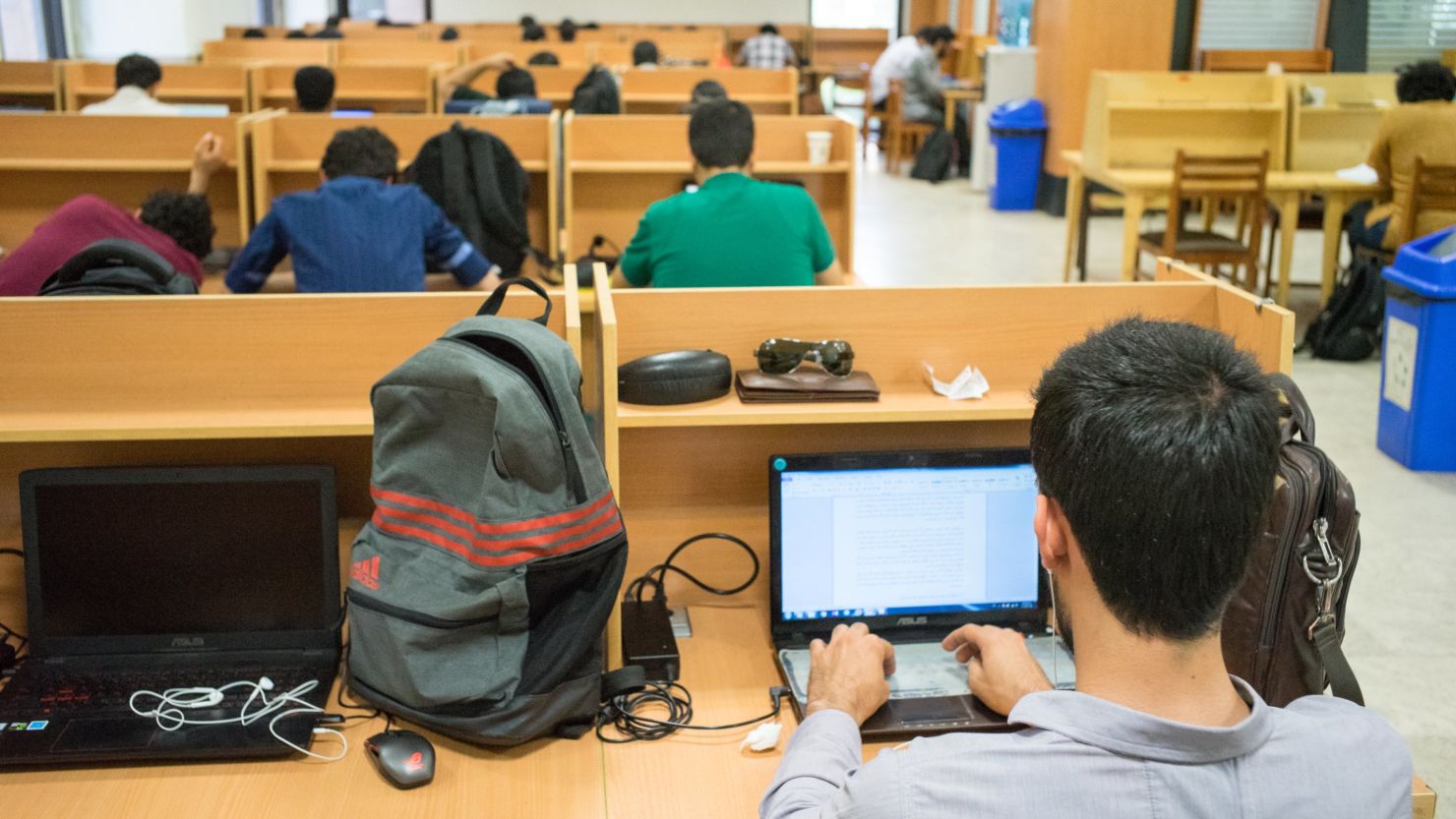Iran artificial intelligence: Current State and Future Prospects
Artificial intelligence (AI), as one of the most advanced technologies of our time, is reshaping the world across various dimensions. Globally, major technology companies such as Google, Microsoft, and Amazon are investing billions in the development of deep learning algorithms, automated systems, and intelligent robots. This technology has permeated various industries, from healthcare to transportation and agriculture, leading to increased productivity, reduced costs, and the creation of innovative services. Furthermore, countries like China and the United States are engaged in intense competition to dominate this field, striving to maintain their leadership through extensive investments in research and commercial infrastructure.
Global AI Landscape: A Competitive Arena
Artificial intelligence stands as a transformative technology, driving unprecedented change across global sectors. Leading technological giants, including Google, Microsoft, and Amazon, are allocating substantial capital towards advancing deep learning algorithms, autonomous systems, and sophisticated robotics. This technological proliferation is revolutionizing industries ranging from healthcare and transportation to agriculture, yielding enhanced efficiency, cost optimization, and novel service delivery. Concurrently, a fierce competitive dynamic is evident among nations, particularly between China and the United States, as they vie for supremacy in AI. This rivalry is characterized by significant investments in both research infrastructure and commercial applications, underscoring the strategic importance of AI in the contemporary global economy.
Artificial intelligence, as one of the emerging fields of science and technology, is taught and researched in many of Iran’s leading universities. Although there are few faculties with the specific name “Artificial Intelligence” in Iran, related groups and departments are active in the faculties of electrical engineering, computer engineering, and computer science. These educational and research centers strive to play a significant role in the advancement of AI technology in Iran by training specialized human resources and generating knowledge in this field. In the following, we introduce some of the most prominent universities and faculties related to artificial intelligence:
Academic Foundations: Cultivating AI Expertise in Iran
The proliferation of artificial intelligence as a pivotal domain within contemporary science and technology is reflected in its integration into the curricula and research initiatives of numerous prestigious Iranian universities. While dedicated “Artificial Intelligence” faculties are relatively scarce, the constituent departments and research groups within Electrical Engineering, Computer Engineering, and Computer Science faculties are at the forefront of AI education and research. These academic hubs are instrumental in nurturing a cadre of specialized professionals and advancing the frontiers of AI knowledge, thereby contributing to Iran’s technological progress. The subsequent sections will highlight key Iranian universities and their respective faculties that are significantly involved in AI research and education.
Sharif University of Technology:
Sharif University of Technology stands as one of Iran’s most distinguished institutions of higher learning in the field of artificial intelligence. Research groups within the faculties of Computer Engineering and Electrical Engineering are actively engaged in specialized areas such as machine learning, natural language processing, computer vision, and data analysis. Sharif University of Technology also collaborates with domestic and international companies to execute applied research projects.
University of Tehran:
The University of Tehran, as Iran’s oldest university, is also a pioneer in the field of artificial intelligence. The faculty of Electrical and Computer Engineering at this university hosts eminent professors and expert researchers in various domains of AI. Research groups within this university focus on topics such as neural networks, intelligent systems, and social AI.
Amirkabir University of Technology (Tehran Polytechnic):

Amirkabir University of Technology is also considered a reputable academic center in the field of artificial intelligence. The faculty of Computer Engineering at this university, by offering specialized courses and conducting research projects, provides a suitable platform for students to advance in AI-related fields.
Iran University of Science and Technology:
The Iran University of Science and Technology, by offering master’s and doctoral programs in the field of artificial intelligence, is one of the research hubs of this technology in Iran. This university conducts extensive research, particularly in the areas of robotics, fuzzy systems, and data mining.
Ferdowsi University of Mashhad:
Ferdowsi University of Mashhad, as one of the major universities in Iran, has paid special attention to artificial intelligence in recent years. The Department of Computer Engineering at this university is active in areas such as image processing, machine learning, and recommender systems.
Isfahan University of Technology:
Isfahan University of Technology, utilizing experienced professors and suitable infrastructure, conducts extensive activities in the field of artificial intelligence. This university focuses on areas such as intelligent simulations, medical AI, and decision-making systems.
University of Tabriz:
The University of Tabriz is also an important center for education and research in northwestern Iran. Research groups at this university conduct research activities in various fields of artificial intelligence, including robotics and automated systems.
Pioneering Innovation: Iran’s AI Startup Ecosystem Unveiled
Beneath the surface of Iran’s evolving tech landscape lies a vibrant and rapidly expanding artificial intelligence ecosystem, teeming with innovative startups and companies poised to disrupt both domestic and regional markets. Despite facing unique challenges, these enterprises are demonstrating remarkable resilience and ingenuity, leveraging cutting-edge AI technologies to address diverse needs. This analysis delves into the heart of Iran’s AI startup scene, showcasing the breadth and depth of its capabilities and the compelling investment opportunities it presents.
Key Sectors and Innovations
- Conversational AI and Customer Experience:
- Companies like Pishkar Bot, Gap GPT, Chat QT, and Zigap are revolutionizing customer interactions through sophisticated Persian-language chatbots. These platforms offer seamless integration with various messaging channels, automating customer support, providing instant information, and enhancing overall user experience. This focus on natural language processing (NLP) tailored to the Persian language showcases a deep understanding of local linguistic nuances, a crucial advantage in the Iranian market.
- Content Creation and Language Processing:
- Aval AI and Ivira AI are at the forefront of AI-driven content creation and language processing. Their platforms offer advanced tools for generating high-quality Persian content, translating between languages, and refining written materials. This capability is invaluable for businesses seeking to expand their digital presence and engage with Persian-speaking audiences.
- Data Analytics and Business Intelligence:
- Houshyar 24, Part DP, and Hoosh No are empowering businesses with powerful data analytics and business intelligence solutions. These platforms leverage machine learning algorithms to extract valuable insights from raw data, enabling companies to make data-driven decisions, optimize processes, and gain a competitive edge. This emphasis on data analytics underscores the growing demand for intelligent solutions in Iran’s business sector.
- Security and Surveillance:
- Rakhsh AI is leveraging AI to enhance security and surveillance capabilities. Their platform provides advanced video analytics, object detection, and facial recognition, enabling proactive monitoring and threat detection. This technology is critical for both public and private sector applications, addressing the growing need for sophisticated security solutions.
- Advanced NLP and Information Retrieval:
- AI Root is specializing in advanced Natural Language Processing (NLP) and information retrieval. This company helps businesses optimize their processes by providing tools for high-accuracy Persian text processing, advanced search, and automated data extraction.
-
The Ascending Trajectory of Iran’s AI Labor Market: A Realm of Emerging Opportunities
The Iranian labor market, particularly within the domain of artificial intelligence, has experienced a period of exponential growth in recent years. This surge is propelled by rapid technological advancements and an escalating demand for AI-driven services across a spectrum of industries, positioning it as one of the most dynamic and sought-after career landscapes in the nation. This section will delve into the current state of Iran’s AI job market, delineating the opportunities, challenges, and prospective trends that characterize this burgeoning sector.
-
- AI Root is specializing in advanced Natural Language Processing (NLP) and information retrieval. This company helps businesses optimize their processes by providing tools for high-accuracy Persian text processing, advanced search, and automated data extraction.
-
Current Status of the AI Job Market in Iran:
- Increasing Demand for Specialists:
- With the integration of AI into various industries such as information technology, healthcare, security, e-commerce, and agriculture, the demand for specialists working in the field of artificial intelligence has increased dramatically.
- Expansion of Startups:
- A large number of startups have emerged in areas such as natural language processing, data analysis, machine learning, and computer vision. These startups have created a broad job market for programmers, data analysts, and AI scientists.
- Increased Usage in Government and Private Organizations:
- Large Iranian organizations and companies are gradually using AI to optimize their processes. For example, large financial companies use AI algorithms for risk management and market forecasting.
- Increasing Demand for Specialists:
Rakhsh AI: Pioneering Persian Language and Security Solutions in the Iranian Tech Landscape
Rakhsh AI is an advanced Iranian AI platform offering integrated Persian language AI services. Positioned within Iran’s vibrant and rapidly expanding AI startup ecosystem, Rakhsh AI contributes significantly to the nation’s technological advancement.
Core Features and Indigenous AI Development
This platform is characterized by its dual focus on creative content and crucial security solutions.
- Persian Language AI and Content Creation: Rakhsh AI provides services tailored for Iranian culture, including chat, content generation, and image creation capabilities.
- The platform features a dedicated text assistant named “Zal”.
- It also employs an image generation engine called “Shahrazad”.
- A non-commercial edition of Rakhsh AI, developed using Django and affiliated with the Aria Haman institute, showcases its intense focus on Persian natural language processing (NLP). The imperative for sophisticated Persian language processing systems is a crucial trend shaping the future of Iran’s AI sector.
- Security and Surveillance AI: Demonstrating versatility, Rakhsh AI is also actively leveraging artificial intelligence to enhance security and surveillance capabilities. This critical technology provides advanced video analytics, object detection, and facial recognition. This enables proactive monitoring and threat detection, addressing the growing need for sophisticated security solutions in both public and private sectors.
The development of platforms like Rakhsh AI underscores the surge in indigenous AI development in Iran, which is strategically building a self-reliant AI ecosystem.
Cultural Embedding and Significance
The name Rakhsh itself holds deep cultural embedding within Persian history. Rakhsh is the name of the loyal horse belonging to Rostam, a legendary Persian hero. This naming choice highlights the platform’s connection to Iranian culture and mythology.
The Evolving Dynamics of Iran’s AI Workforce
The Iranian artificial intelligence labor market is undergoing a transformative phase, characterized by both remarkable growth and significant challenges. The burgeoning demand for AI-driven solutions across diverse sectors, ranging from e-commerce and healthcare to finance and agriculture, has catalyzed a surge in career opportunities. This demand is particularly evident in the proliferation of AI-focused startups, which serve as incubators for talent and innovation. Roles such as Algorithm Architects, Data Intelligence Analysts, and Machine Learning Systems Engineers are becoming increasingly vital, reflecting the sophisticated nature of AI projects undertaken within the country. However, this growth is tempered by a critical talent gap; while Iran possesses a strong foundation in STEM education, the rapid evolution of AI technologies necessitates continuous upskilling and specialized training.
Simultaneously, infrastructural limitations and the impact of international sanctions present significant hurdles. Restricted access to cutting-edge computational resources and global AI platforms like Google Cloud AI and Amazon AWS impedes the development and deployment of advanced AI solutions. These constraints, coupled with the allure of international opportunities, contribute to a notable brain drain, as highly skilled professionals seek environments with greater resources and compensation. Addressing these challenges is paramount for Iran to fully capitalize on its AI potential. Strategic investments in educational programs, infrastructure development, and fostering international collaborations are crucial steps. Moreover, creating an environment that encourages innovation and retains talent will be essential for establishing Iran as a competitive player in the global AI landscape, thereby unlocking significant investment opportunities for those who recognize the long-term value of this evolving market.
Iran’s AI Frontier: Navigating Talent, Tech, and Tomorrow’s Market
In the heart of the Middle East, a quiet revolution is unfolding. Iran’s artificial intelligence sector, a blend of burgeoning talent and strategic ambition, is rapidly shaping the nation’s economic landscape. While international eyes often focus on geopolitical narratives, a parallel story of technological innovation is emerging, one that holds significant implications for investors and industry observers alike.
The narrative begins with a surge. Across diverse sectors – from the precision of healthcare to the vast fields of agriculture, and the dynamic realms of e-commerce and finance – AI is no longer a distant concept but a tangible force driving growth. This demand is not merely theoretical; it’s being met by a vibrant ecosystem of AI startups, acting as incubators for cutting-edge solutions and fostering a new generation of Algorithm Architects, Data Intelligence Analysts, and Machine Learning Systems Engineers. These aren’t just job titles; they represent the vanguard of Iran’s technological advancement.
Yet, this promising trajectory is not without its challenges. A critical talent gap looms, demanding a concerted effort to bridge the divide between academic excellence and practical application. While Iran boasts a robust STEM foundation, the rapid pace of AI evolution necessitates continuous upskilling and specialized training. Coupled with infrastructural constraints and the persistent shadow of international sanctions, access to pivotal resources like advanced computational power and global AI platforms remains a significant hurdle. These limitations, unfortunately, contribute to a notable brain drain, as skilled professionals seek opportunities beyond Iran’s borders.
Looking ahead, the horizon is marked by clear trends. The imperative for Persian language processing systems, including sophisticated chatbots and translation tools, will create specialized roles for NLP experts. Simultaneously, academic institutions are poised to expand their AI offerings, nurturing the next wave of talent. The necessity for indigenous AI platforms, driven by external constraints, will spur local innovation.
For those seeking to tap into this dynamic market, a strategic approach is paramount. Foundational skills in languages like Python, coupled with mastery of machine learning libraries, are essential. Practical experience, gleaned from real-world projects, is invaluable. Continuous learning, through workshops and courses, will ensure professionals remain at the forefront. Networking, a cornerstone of any industry, will open doors to collaboration and opportunity.
Iran’s AI landscape, though complex, presents a compelling narrative of resilience and potential. For investors and industry leaders willing to navigate its challenges, the rewards could be substantial. The nation’s commitment to technological advancement, coupled with its rich talent pool, suggests that Iran’s AI frontier is not just a passing trend, but a significant chapter in the global AI story.
Iran’s AI Gambit: Unveiling a Hidden Tech Powerhouse
Beyond the familiar narratives, a compelling story of technological resurgence is unfolding in Iran. This isn’t just about potential; it’s about the tangible emergence of a dynamic artificial intelligence sector, a hidden powerhouse poised to redefine the nation’s economic and technological trajectory. For discerning investors and industry leaders, the question isn’t if Iran’s AI will matter, but when they will capitalize on its burgeoning potential.
Consider the landscape: a nation where necessity has birthed innovation. Sanctions, far from stifling progress, have ignited a surge in indigenous AI development. From sophisticated Persian language processing tools to bespoke platforms catering to local industry needs, Iran is building a self-reliant AI ecosystem. This isn’t merely a defensive strategy; it’s a foundation for future regional and global expansion.
The impact is already being felt across key sectors. Healthcare is witnessing the rise of AI-driven diagnostics and remote patient care, addressing critical needs with cutting-edge solutions. Agriculture is embracing AI to optimize resource management and boost productivity, tackling food security challenges head-on. E-commerce is experiencing a revolution in personalized customer experiences, while smart transportation and security systems are enhancing public safety.
This technological leap is fueled by a potent combination: a young, highly educated population and a growing network of academic and research institutions. Universities are rapidly expanding their AI curricula, while the Artificial Intelligence Society of Iran acts as a crucial nexus, fostering collaboration and knowledge dissemination. Despite limitations, the thirst for international collaboration and online learning ensures that Iranian AI talent remains competitive on the global stage.
Of course, challenges remain. The talent gap, though narrowing, demands continued investment in specialized training. Sanctions necessitate innovative solutions for accessing advanced computational resources. And the allure of international opportunities poses a constant threat of brain drain. Yet, these challenges are not insurmountable; they are opportunities in disguise.
Iran’s strategic focus on addressing domestic needs, coupled with its growing regional influence, presents a unique investment proposition. The development of indigenous AI platforms, the expansion of AI in daily life, and a commitment to ethical AI practices create a fertile ground for innovation and growth. For investors seeking to tap into a market with untapped potential, Iran’s AI sector offers a compelling opportunity.
This isn’t just about technology; it’s about a nation strategically positioning itself for the future. By fostering a culture of innovation, investing in human capital, and forging strategic partnerships, Iran is laying the groundwork for a sustainable AI ecosystem. This isn’t a gamble; it’s a calculated move. For those who recognize the long-term potential, Iran’s AI gambit is a winning hand.
Frequently Asked Questions (FAQ) about Iran Artificial Intelligence
The field of Iran Artificial Intelligence is rapidly evolving, driving innovation across various sectors and positioning Iran as an emerging technological powerhouse. Below are answers to common questions regarding its current state and future prospects, drawing directly from academic developments, market growth, and strategic challenges.
Q1: Where are the academic foundations for Iran Artificial Intelligence cultivated?
Iran Artificial Intelligence expertise is cultivated within numerous prestigious universities across the country. Although dedicated “Artificial Intelligence” faculties are relatively scarce, AI is extensively taught and researched within the constituent departments and research groups of Electrical Engineering, Computer Engineering, and Computer Science faculties.
Key academic institutions significantly involved in AI research and education include:
- Sharif University of Technology: This institution is highly distinguished, with research focusing on machine learning, natural language processing (NLP), computer vision, and data analysis.
- University of Tehran: As Iran’s oldest university, it pioneers research in neural networks, intelligent systems, and social AI.
- Amirkabir University of Technology (Tehran Polytechnic): This center provides platforms for students to advance in AI through specialized courses and research projects.
- Iran University of Science and Technology: This university serves as a research hub, offering master’s and doctoral programs, specializing particularly in robotics, fuzzy systems, and data mining.
- Other major contributors include Ferdowsi University of Mashhad (focusing on image processing and recommender systems) and Isfahan University of Technology (focusing on medical AI and intelligent simulations).
Q2: What major sectors are utilizing Iran Artificial Intelligence solutions?
The Iran Artificial Intelligence ecosystem is generating solutions that impact a diverse range of industries, driven by a vibrant startup scene. AI is revolutionizing sectors such as:
- Technology and E-commerce: Large Iranian companies are using AI algorithms for market forecasting and optimizing internal processes. E-commerce is experiencing advancements in personalized customer experiences.
- Natural Language Processing (NLP): Companies like Pishkar Bot, Gap GPT, Chat QT, and Zigap are revolutionizing customer interactions through sophisticated Persian-language chatbots. Furthermore, Aval AI and Ivira AI are at the forefront of AI-driven content creation, translation, and refinement of Persian content. The imperative for Persian language processing systems is a crucial trend shaping the future of Iran’s AI sector.
- Data and Business Intelligence: Platforms like Houshyar 24, Part DP, and Hoosh No empower businesses by leveraging machine learning algorithms to extract valuable insights, enabling data-driven decisions and process optimization.
- Security and Surveillance: Rakhsh AI is utilizing AI for advanced video analytics, object detection, and facial recognition, providing proactive monitoring and threat detection for both public and private sector applications.
- Healthcare and Agriculture: AI is addressing critical needs through AI-driven diagnostics and remote patient care in healthcare, and optimizing resource management and boosting productivity in agriculture.
Q3: What is the current status of the AI labor market in Iran?
The labor market within the domain of Iran Artificial Intelligence has experienced exponential growth, positioning it as one of the most dynamic career landscapes in the nation. This surge is driven by the integration of AI into various industries, leading to dramatically increased demand for specialists.
The expansion of AI-focused startups—acting as incubators for talent and innovation—has created a broad job market for specific roles. Roles that are becoming increasingly vital include:
- Algorithm Architects
- Data Intelligence Analysts
- Machine Learning Systems Engineers
- Programmers and AI scientists
Foundational skills in languages like Python, mastery of machine learning libraries, and practical experience are essential for those seeking to tap into this market.
Q4: What key challenges face the advancement of Iran Artificial Intelligence?
While the trajectory of Iran Artificial Intelligence is promising, its growth is tempered by significant challenges. These hurdles include:
- Talent Gap: Despite Iran’s robust foundation in STEM education, the rapid evolution of AI technologies necessitates continuous upskilling and specialized training to bridge a critical talent gap.
- Infrastructural Constraints and Sanctions: International sanctions and infrastructural limitations restrict access to pivotal resources. This includes difficulty accessing advanced computational resources and global AI platforms, such as Amazon AWS and Google Cloud AI.
- Brain Drain: The allure of international opportunities and environments with greater resources and compensation contributes to a notable brain drain, as highly skilled professionals often seek environments beyond Iran’s borders.
Q5: Are there examples of indigenous platforms driving Iran Artificial Intelligence development?
Yes, necessity has spurred a surge in indigenous AI development in Iran, enabling the strategic building of a self-reliant AI ecosystem.
A prominent example is Rakhsh AI, an advanced Iranian AI platform offering integrated Persian language AI services and critical security solutions. Rakhsh AI contributes significantly to the nation’s technological advancement and demonstrates an intense focus on Persian natural language processing (NLP).
Core features of Rakhsh AI include:
- A dedicated text assistant named “Zal”.
- An image generation engine called “Shahrazad”.
- Advanced video analytics, object detection, and facial recognition for enhanced security and surveillance.
This commitment to indigenous platforms is driven by external constraints and is fostering local innovation
LAST WORDS…
Iran’s AI narrative transcends mere technological advancement; it’s a strategic repositioning on the global stage. Driven by necessity and fueled by a burgeoning talent pool, the nation is forging a self-reliant AI ecosystem with significant regional and international potential. While challenges persist, they are overshadowed by the immense opportunities that lie within this dynamic market. For investors and industry leaders, the message is clear: Iran’s AI gambit is not a distant promise, but a present reality. To overlook this emerging powerhouse is to miss a pivotal chapter in the unfolding global AI story, a chapter where innovation and strategic vision converge to create a compelling investment landscape.















Post Comment